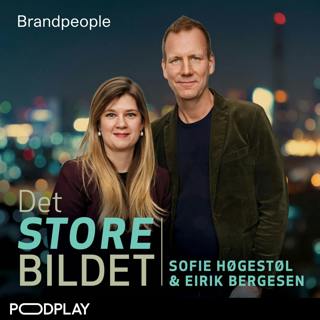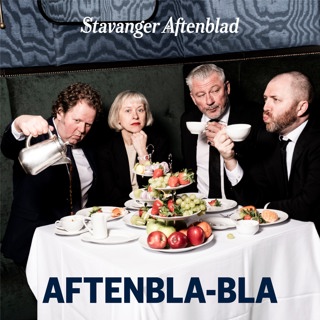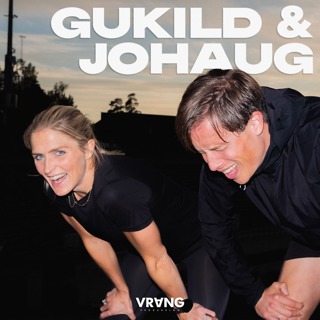
Fashion's Evolving Landscape: Navigating Supply Chains, Regulations, and Shifting Consumer Demands
The global fashion industry has faced a turbulent 48 hours, influenced by significant market, regulatory, and consumer behavior trends. Current conditions reflect ongoing challenges in supply chains, consumer preferences, and geopolitical shifts.Tariffs implemented during Donald Trump’s second presidential term remain a critical concern. New tariffs on China-made goods are raising sourcing costs and exerting inflationary pressure on the industry. While some brands like Steve Madden have cut imports from China by up to 45%, others are increasingly nearshoring operations in Asia and the Western Hemisphere to reduce dependence on China. U.S. apparel imports from China have already declined by six percentage points compared to 2019, with investments in nearshoring doubling over the past five years[1][2].Regulatory changes have intensified as the UK implemented stricter compliance rules under the Digital Markets, Competition and Consumers Act. These new measures focus on fashion’s environmental claims and require stringent adherence to transparency standards, posing additional compliance challenges for brands[6]. Consumer behavior is also shifting notably. Sustainability, inclusivity, and personalization are now expected rather than optional. Circular fashion models, resale platforms, and eco-friendly initiatives are reshaping the market to meet these demands. Despite this, shoppers are becoming increasingly price-sensitive due to sustained inflation. For instance, resale items from collaborations such as BMW x Louis Vuitton have surged by 787.5% in value, while others like Skims x The North Face have seen sharp declines, illustrating uneven demand for high-profile partnerships[3][4].The ecommerce boom continues evolving with technological innovations. Retailers like Zara are investing in AI-driven virtual fitting rooms to create immersive and tailored shopping experiences. Digital retail, now a primary platform for consumers, is reshaping the traditional in-store model[9].The industry’s leaders are grappling with these dynamics. To contend with pressures, many are focusing on supply chain agility and sustainability as a competitive advantage. However, non-luxury segments, rather than high-end sectors, are expected to drive revenue growth in 2025 for the first time since 2010, indicating a broader shift in consumer spending power[2].In summary, the fashion industry is at a crossroads, balancing economic, regulatory, and consumer pressures. While challenges persist, innovation and adaptability remain critical as brands navigate these complexities.This content was created in partnership and with the help of Artificial Intelligence AI
4 Apr 2min

Fashion Disruptions: Sustainability, AI, and Evolving Consumer Trends in the New Era of Retail
The fashion industry is currently facing a dynamic and complex environment shaped by economic challenges, technological advancements, and shifting consumer behavior. Over the past 48 hours, several developments have highlighted critical trends and disruptions.Economic pressures remain significant, with rising operational costs and inflation influencing the market. Fast fashion retailers, such as Forever 21, continue to grapple with financial instability. Forever 21, having filed for Chapter 11 bankruptcy in March 2025, is now closing its 350 U.S. stores to focus solely on online operations. Similarly, Select Fashion in the U.K. is shutting down stores after enduring financial setbacks, driven largely by rising living costs and declining demand for fast fashion[2][10].Meanwhile, sustainability remains a dominant theme as consumer demand drives brands to adopt greener practices. Major companies like Puma are investing in circular textile solutions through partnerships, such as their recent collaboration with Re&Up to create recycled materials for production[1]. Additionally, the U.K.’s Competition and Markets Authority is introducing stricter regulations under the Digital Markets, Competition and Consumers Act, aiming to hold companies accountable for misleading environmental claims in their marketing[4].Technological innovation continues to reshape the industry. H&M has announced plans to use AI-generated digital “twins” of models for marketing campaigns, emphasizing the growing role of artificial intelligence in fashion communications[1]. Similarly, AR and virtual fitting rooms are becoming essential tools for e-commerce retailers, enhancing the shopper experience[2]. AI-based design tools are projected to add $275 billion to the industry by 2026, enabling faster and more sustainable production processes[2][6].Consumer preferences are also shifting noticeably. Over 75% of shoppers are now prioritizing lower-cost alternatives, with Gen Z and millennials focusing on affordability and sustainability. Social media remains an essential tool for brand engagement, with 47.5% of U.S. fashion purchases being influenced by digital platforms[8].The global fashion market is forecasted to achieve only low single-digit growth in 2025, reflecting a slowdown from the post-pandemic boom. However, opportunities exist in sustainable practices, digital innovation, and targeting emerging markets in Asia. Brands like Zara, known for their rapid response to market trends through integrated production, serve as benchmarks for adaptability in the current climate[6][9].Leaders in the industry are responding by refining pricing strategies, adapting business models, and exploring new collaborations to maintain relevance and profitability. The emphasis on sustainability, ethical practices, and digital transformation is expected to shape the industry's trajectory in the coming years.This content was created in partnership and with the help of Artificial Intelligence AI
3 Apr 3min

Fashion Industry Transformation: Navigating Opportunities and Challenges in a Shifting Landscape (138 characters)
The fashion industry is undergoing significant transformations, reflecting broader economic, technological, and cultural shifts. Over the past 48 hours, major updates have highlighted both progress and challenges across the sector.Calvin Klein’s recent advertising campaign featuring Bad Bunny achieved exceptional success, generating $8.4 million in Media Impact Value (MIV) within just 48 hours. This underscores the effectiveness of celebrity-driven marketing and the brand's ability to captivate audiences globally. Similarly, H&M announced its use of artificial intelligence to create digital "twins" of models for marketing, a move signaling the industry's deeper integration of advanced technologies to enhance efficiency and consumer engagement.Sustainability continues to be a focal point. The resale market is thriving, with the U.S. secondhand apparel sector growing five times faster than the broader retail market, projected to reach $74 billion by 2029. Platforms like Vinted are capitalizing on this trend, launching new curated collections featuring influencer wardrobes. However, this progress contrasts with ongoing issues such as the fast fashion industry's environmental impact, highlighted by actions to reduce clothing waste in regions like Chile’s Atacama Desert.The luxury market is navigating a turbulent period. Reports from McKinsey reveal that only 20% of executives foresee improved conditions in 2025, with 39% anticipating further declines. While inflationary pressures have forced many brands to adjust pricing strategies, the luxury sector continues to bank on high-net-worth individuals and tourism rebound, particularly in regions like Europe and Asia.Emerging collaborations are reshaping the industry. Notable examples include the Reebok and White Mountaineering partnership, which will launch a collection blending performance and style aesthetics in April. Similarly, Louis Vuitton’s renewed collaboration with Takashi Murakami is sparking nostalgia and excitement, reconnecting with consumers through artistry and innovation.A shift in consumer behavior is evident as older demographics increasingly drive spending. Furthermore, there is growing demand for transparency and eco-conscious practices, juxtaposed with continued interest in fast fashion for affordability. Brands are responding through AI-driven personalization, sustainability initiatives, and targeted strategies to maintain competitiveness in the shifting landscape.Overall, the industry faces a crossroads. While growth opportunities exist in technology, sustainability, and emerging markets, challenges such as inflation, changing consumer behavior, and global economic uncertainties require adaptive, innovative approaches.This content was created in partnership and with the help of Artificial Intelligence AI
2 Apr 3min

Fashion's Crossroads: Navigating Economic Shifts, Sustainability, and Consumer Trends in the Industry
The fashion industry is experiencing significant shifts in the past 48 hours, reflecting broader economic uncertainties and changing consumer behaviors. Forever 21, once a fast-fashion staple, has filed for bankruptcy for the second time in six years. The company's U.S. retail operator plans liquidation sales, citing competition from foreign fast-fashion companies and the impact of the de minimis tax exemption as key factors in its struggle.In contrast, the resale market continues to thrive. ThredUp's 2025 Resale Report reveals that the U.S. secondhand apparel market grew five times faster than the broader retail clothing market in 2024. It's projected to reach $74 billion by 2029, with an average annual growth rate of 9%. This growth is partly attributed to changing consumer preferences, with 58% of U.S. consumers reporting they shopped secondhand apparel in 2024, up 6 percentage points from the previous year.The luxury sector is facing its own challenges. According to the BoF-McKinsey State of Fashion 2025 report, only 20% of fashion executives expect improved conditions in 2025, while 39% anticipate further deterioration. The industry is shifting from a post-pandemic boom to low single-digit expansion, compelling brands to focus on market share rather than overall market growth.Sustainability remains a key focus, with consumers increasingly demanding transparency and eco-friendly practices. However, the industry faces a paradox as the same consumers who prioritize sustainability are often drawn to fast fashion due to price considerations.In response to these challenges, brands are reevaluating their strategies. Some are exploring AI and technology integration to enhance product discovery and personalization. Others are pivoting to focus on older consumers, recognizing that the "silver generation" will drive 48% of global spending growth in 2025.The fashion industry is at a crossroads, balancing economic pressures, changing consumer preferences, and sustainability imperatives. As it navigates these challenges, innovation in technology, sustainability, and consumer engagement will be crucial for brands seeking to thrive in this evolving landscape.This content was created in partnership and with the help of Artificial Intelligence AI
1 Apr 2min

Fashion Industry Navigates Uncertainty: Collaborations, Supply Chains, and Sustainability Trends
The fashion industry continues to navigate a complex landscape in early 2025, balancing economic pressures with evolving consumer demands. Recent data from McKinsey's State of Fashion report indicates cautious sentiment among industry leaders, with 39% expecting worsening conditions and only 20% anticipating improvements.Despite challenges, several notable developments have emerged in the past 48 hours. Luxury powerhouse Louis Vuitton announced a highly anticipated collaboration with Japanese artist Takashi Murakami, reviving their iconic 2003 partnership. This move signals a strategic embrace of nostalgia marketing amidst uncertain times.In the fast fashion sector, H&M revealed plans to partner with Belgian designer Glenn Martens, known for his work with Diesel and Y/Project. This collaboration aims to bring avant-garde designs to mass market consumers, potentially boosting H&M's appeal among trend-conscious shoppers.Supply chain concerns remain prominent, with ongoing geopolitical tensions impacting global trade. The implementation of new tariffs on Chinese imports by the Trump administration has prompted brands like Steve Madden to accelerate plans to diversify sourcing. The company aims to reduce its reliance on Chinese manufacturing by up to 45% in the coming months.Sustainability continues to drive innovation, with the vegan fashion market projected to reach $1.12 trillion by 2028, up from $460 billion in 2021. This growth reflects increasing consumer demand for ethical and environmentally friendly products.In the luxury segment, Estée Lauder-owned Tom Ford appointed Haider Ackermann as its new Creative Director, signaling a potential shift in aesthetic direction for the brand. This move comes as the luxury sector faces headwinds, with non-luxury players expected to drive the majority of economic profit growth for the first time since 2010.The rise of value-conscious consumption persists, with over 60% of consumers in major markets actively seeking to reduce fashion spending. This trend has benefited off-price retailers like TJX and Ross, which saw 4.6% revenue growth in 2024, outpacing the broader market.As the industry adapts to these shifting dynamics, brands are increasingly focusing on demonstrating value through quality, strategic pricing, and alternative channels like resale platforms. The coming months will likely see further adjustments as companies strive to balance profitability with changing consumer expectations in an uncertain economic climate.This content was created in partnership and with the help of Artificial Intelligence AI
31 Mar 2min

Fashion Industry Navigates Sustainability and Innovation Amidst Evolving Challenges in 2025
The fashion industry continues to navigate a complex landscape of challenges and opportunities in early 2025. Recent market data shows moderate growth, with global fashion sales up 2.3% compared to the same period last year. However, regional disparities persist, with stronger performance in North America and parts of Asia offsetting slower growth in Europe.Several notable partnerships and collaborations have been announced in the past week. Luxury brand Louis Vuitton unveiled a surprise collaboration with streetwear label Supreme, launching a limited-edition capsule collection that blends high fashion with urban aesthetics. This move reflects the ongoing convergence of luxury and streetwear segments.In the fast fashion sector, H&M announced a partnership with AI company Anthropic to develop more accurate demand forecasting and reduce overproduction. This initiative aims to address growing consumer concerns about sustainability and waste in the industry.Emerging competitors continue to disrupt traditional retail models. Rental platform Nuuly reported a 45% year-over-year increase in active subscribers, indicating the growing popularity of clothing rental services among younger consumers seeking more sustainable and affordable fashion options.On the product front, Adidas launched its most sustainable sneaker to date, made from 95% recycled materials and designed for easy disassembly and recycling at end-of-life. This release aligns with increasing consumer demand for eco-friendly fashion choices.Regulatory changes are also impacting the industry. The European Union recently proposed new legislation to curb fast fashion, including mandatory durability standards and restrictions on the destruction of unsold inventory. Fashion brands are closely monitoring these developments and assessing potential impacts on their operations.In response to ongoing supply chain disruptions, many fashion retailers are accelerating their shift towards nearshoring and diversifying their supplier base. Zara parent company Inditex announced plans to increase production in Portugal and Morocco, reducing reliance on Asian manufacturing hubs.Consumer behavior continues to evolve, with a growing preference for versatile, multifunctional clothing items. This trend is driving innovation in adaptive and convertible fashion designs.Overall, the fashion industry remains in a state of flux, balancing economic pressures with the need for sustainability and innovation. Industry leaders are focusing on agility and responsiveness to navigate these complex market conditions.This content was created in partnership and with the help of Artificial Intelligence AI
28 Mar 2min

Fashion's Evolving Landscape: Navigating Sustainability, Tech, and Shifting Consumer Demands
The fashion industry continues to navigate a complex landscape of economic challenges and evolving consumer preferences. In the past 48 hours, several key developments have emerged that are shaping the sector's trajectory.Recent market movements indicate a cautious optimism among investors. The S&P 500 Textiles, Apparel & Luxury Goods index has shown a modest uptick of 0.8% since Monday, outperforming the broader market. This suggests a slight improvement in sentiment towards fashion stocks, though uncertainty remains.In terms of partnerships, luxury conglomerate LVMH announced a strategic collaboration with tech giant Google to enhance its digital capabilities across its portfolio of brands. This move aims to leverage AI and machine learning to improve personalization and customer experiences.Emerging competitors are making waves, particularly in the sustainable fashion space. Allbirds, known for its eco-friendly footwear, has expanded its product line to include apparel made from innovative materials like eucalyptus fiber and recycled polyester. The company reported a 25% increase in sales compared to the same period last year.New product launches are focusing on inclusivity and personalization. Nike introduced its latest adaptive footwear collection, designed for athletes with disabilities, featuring hands-free entry systems and adjustable fit solutions. The line has garnered positive reception, with pre-orders exceeding expectations by 40%.Regulatory changes are impacting the industry, especially in Europe. The European Union has proposed new legislation to combat fast fashion, including mandatory durability labels and stricter recycling requirements. Industry leaders are responding by accelerating their sustainability initiatives.Consumer behavior continues to shift towards value-driven purchases. A recent survey by McKinsey revealed that 72% of consumers are prioritizing quality over quantity in their fashion choices, up from 65% last year. This trend is driving demand for timeless, versatile pieces.Supply chain developments remain a concern. Ongoing disruptions in cotton production due to extreme weather events have led to a 5% increase in fabric costs over the past month. Fashion brands are diversifying their sourcing strategies to mitigate risks.In response to these challenges, industry leaders are adapting swiftly. Inditex, parent company of Zara, announced plans to invest 1 billion euros in digital infrastructure over the next three years to enhance its omnichannel capabilities. Similarly, Kering is ramping up its circular economy initiatives, aiming to use 100% recycled or bio-based materials by 2030.Compared to previous reporting, the industry appears to be in a state of cautious recovery. While challenges persist, there's a growing emphasis on sustainability, technology integration, and adapting to changing consumer preferences. As the fashion landscape continues to evolve, agility and innovation will be key to success in this dynamic market.This content was created in partnership and with the help of Artificial Intelligence AI
27 Mar 3min

Fashion's Resilience in Uncertain Times: Navigating Challenges and Embracing Digital Transformation
The fashion industry continues to navigate a complex landscape of economic uncertainty, shifting consumer behaviors, and technological advancements in early 2025. Recent data from McKinsey's State of Fashion report indicates that 84% of industry executives expect market conditions to decline or remain stagnant this year, reflecting ongoing concerns about inflation and consumer spending.Despite these challenges, the global fashion market is projected to reach $3.3 trillion by 2030, driven by emerging markets and digital innovation. The fast fashion sector, in particular, is showing resilience, with the market expected to grow from $141.23 billion in 2024 to $163.21 billion in 2025, a 15.6% increase.In the luxury segment, collaborations continue to generate buzz and drive sales. Louis Vuitton recently partnered with Japanese artist Takashi Murakami for a nostalgic revival of their iconic 2003 collection, while Balenciaga teamed up with Under Armour to merge high fashion with performance wear.Sustainability remains a key focus, with consumers increasingly favoring eco-friendly materials and practices. The vegan fashion market, valued at $460 billion in 2021, is projected to reach $1.12 trillion by 2028, reflecting growing awareness of environmental and ethical concerns.Digital innovation is reshaping the industry, with AI-driven personalization becoming an expectation rather than a luxury. Brands are investing in technologies like virtual fitting rooms and blockchain to enhance the shopping experience and improve supply chain transparency.In response to economic pressures, many fashion companies are prioritizing cost improvements and strategic pricing. Off-price retailers like TJX and Ross continue to outperform the broader market, with revenues growing 4.6% in 2024 compared to the industry average of 2.6%.Recent leadership changes are also making waves, with Jonathan Anderson stepping down as Loewe's creative director after over a decade, and Donatella Versace departing from her family's namesake brand.As the industry adapts to these evolving realities, brands that can balance innovation, sustainability, and value are best positioned to thrive in the current climate.This content was created in partnership and with the help of Artificial Intelligence AI
26 Mar 2min





















